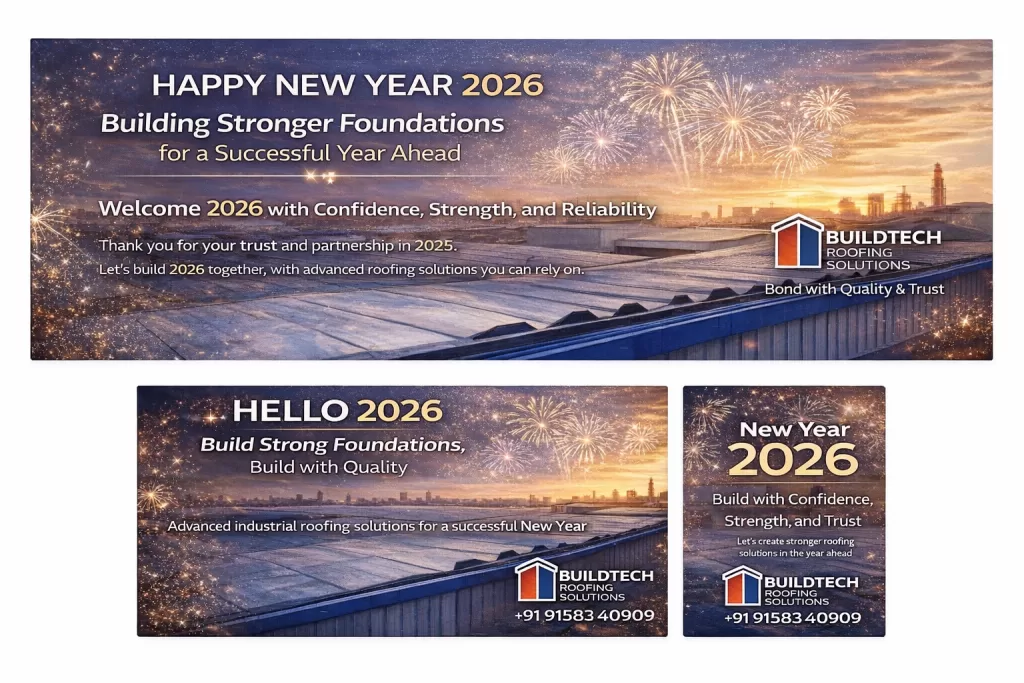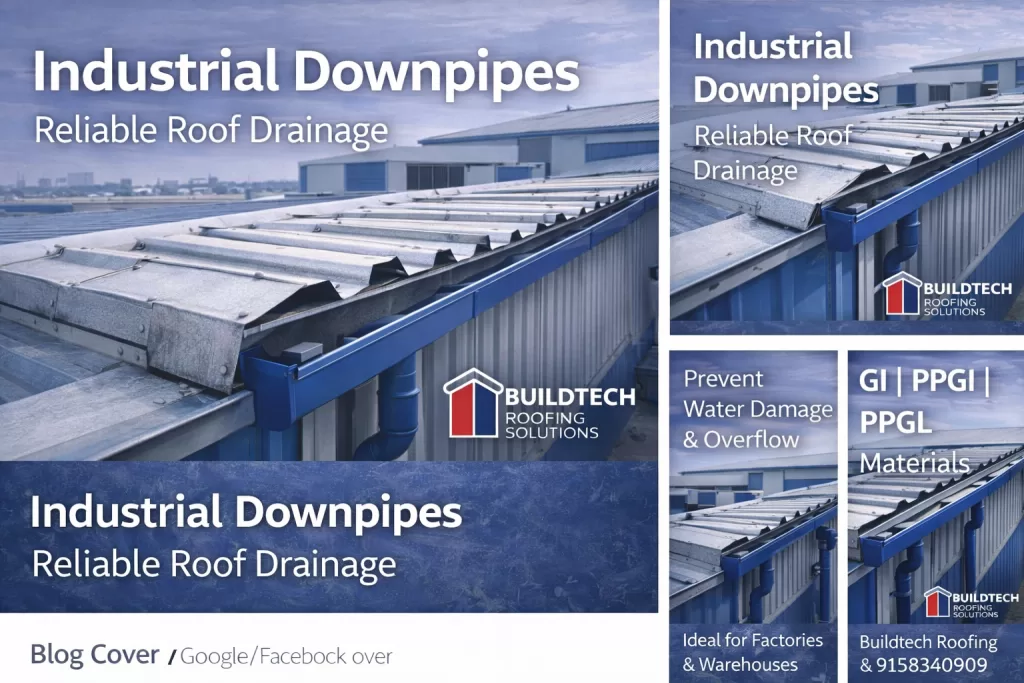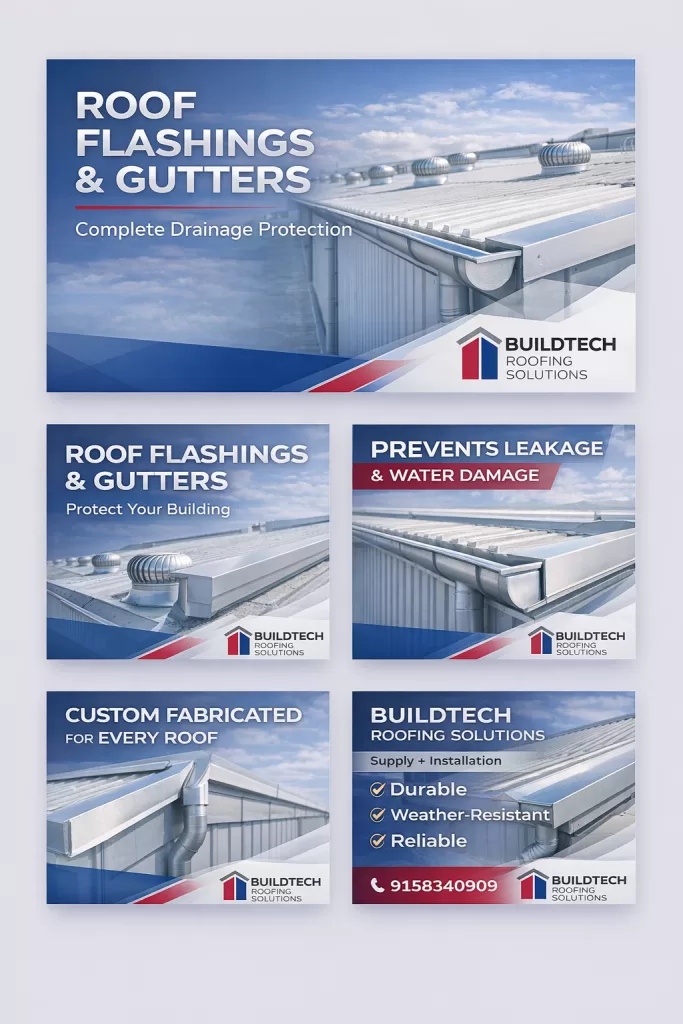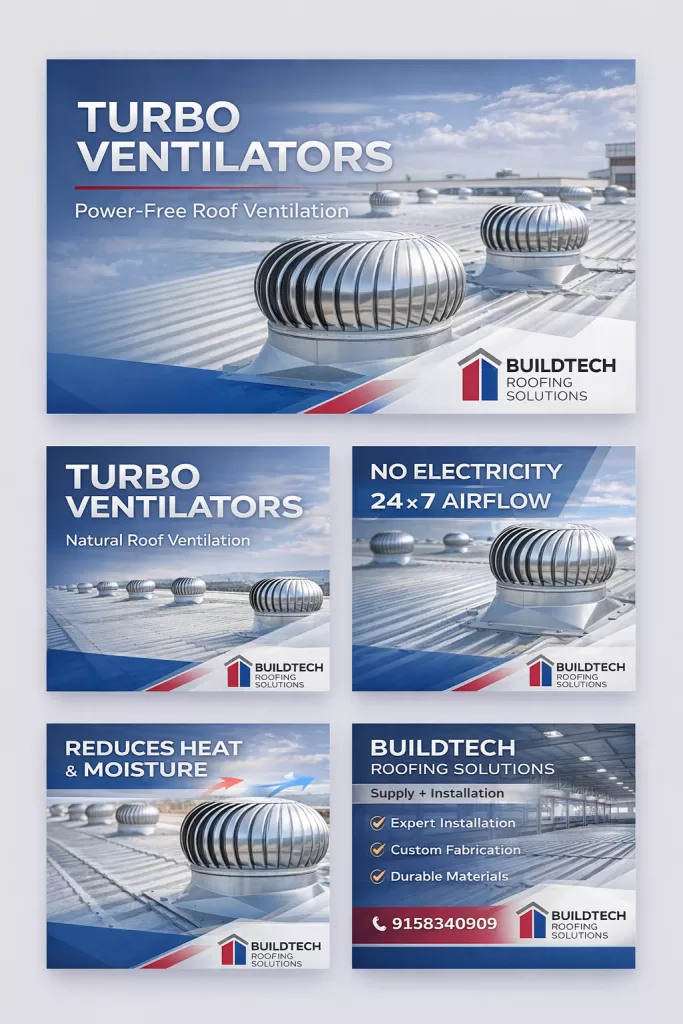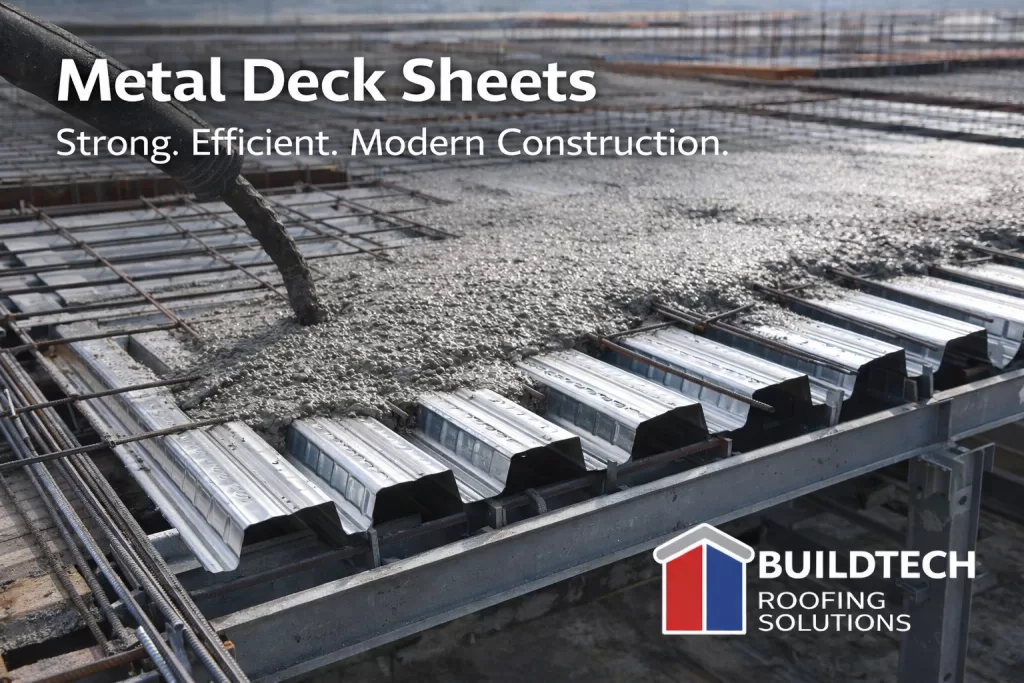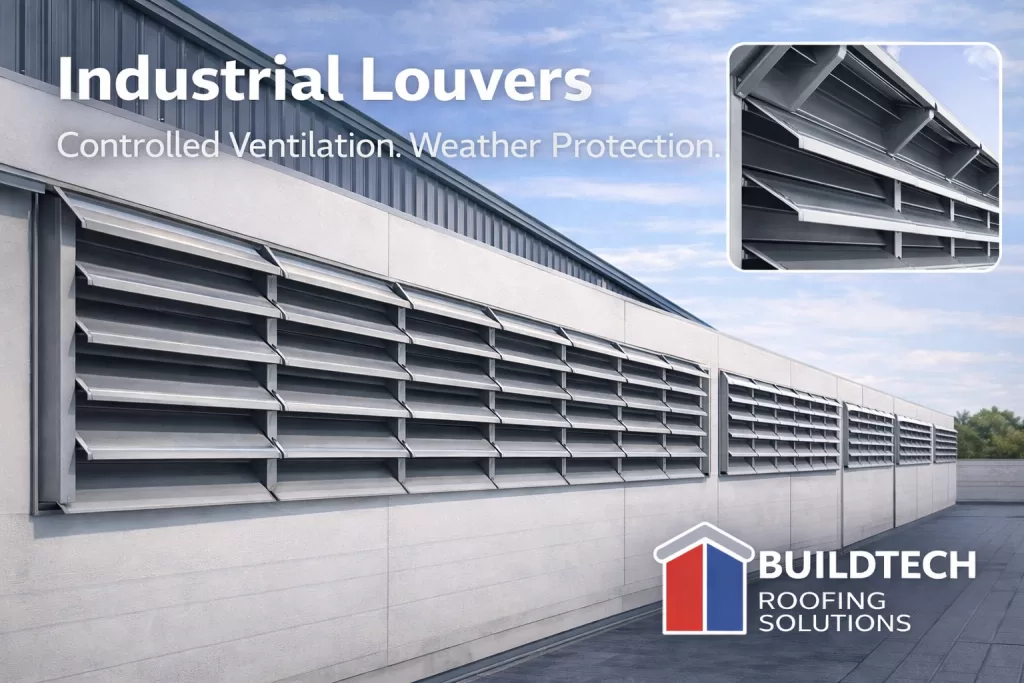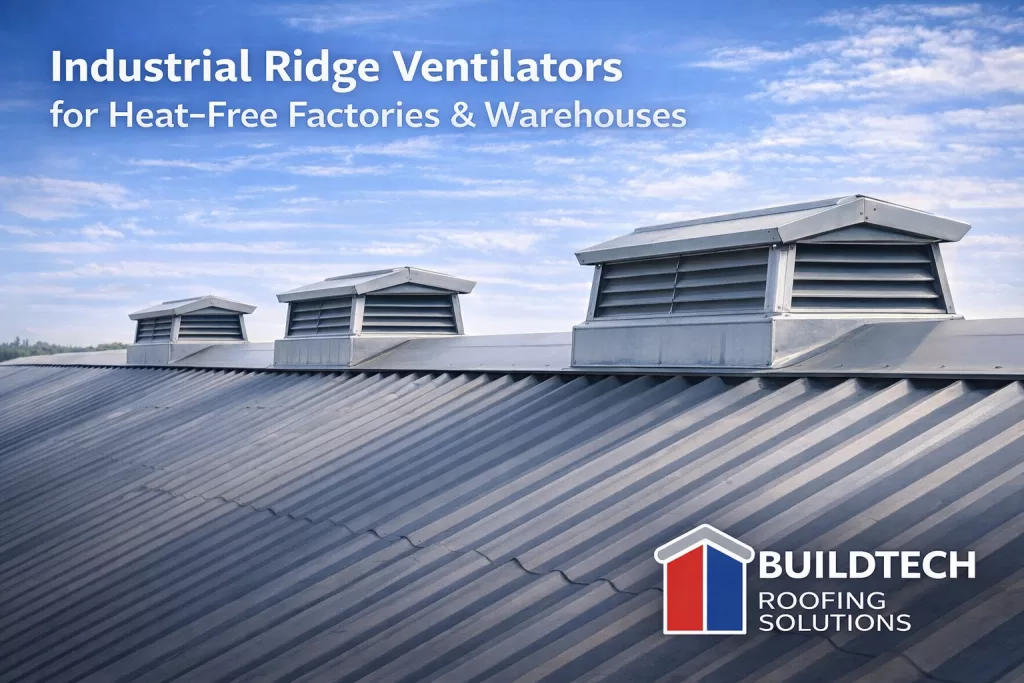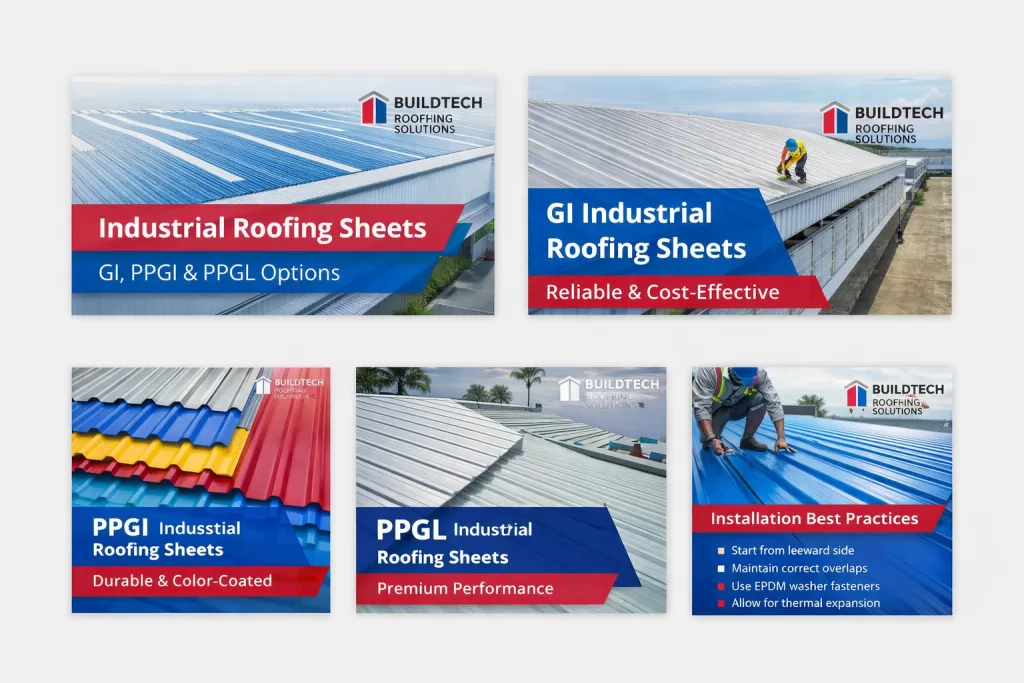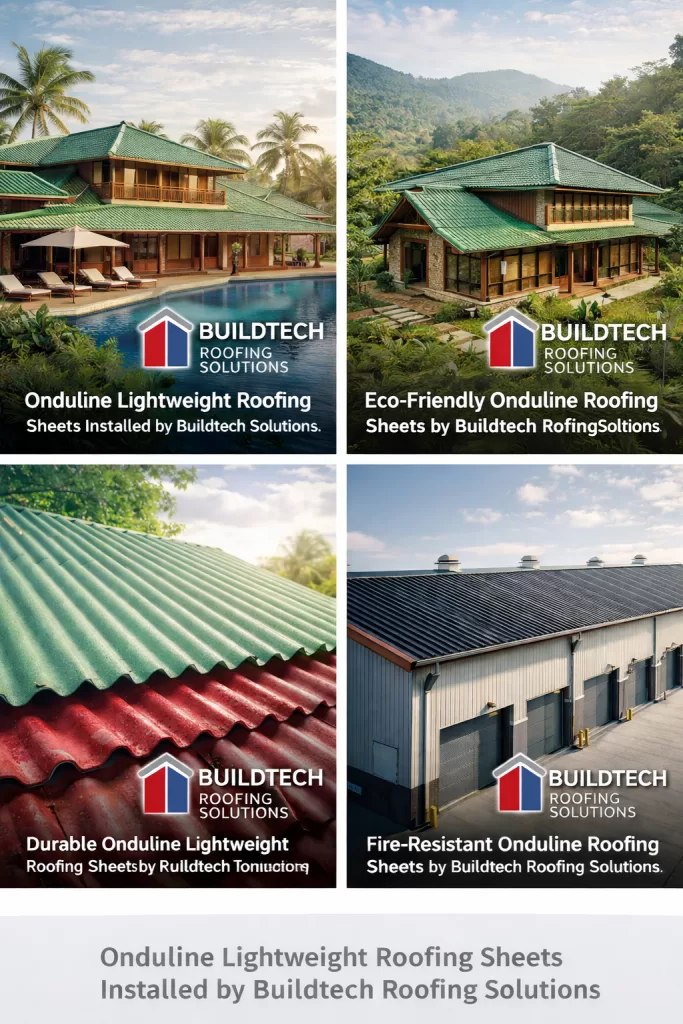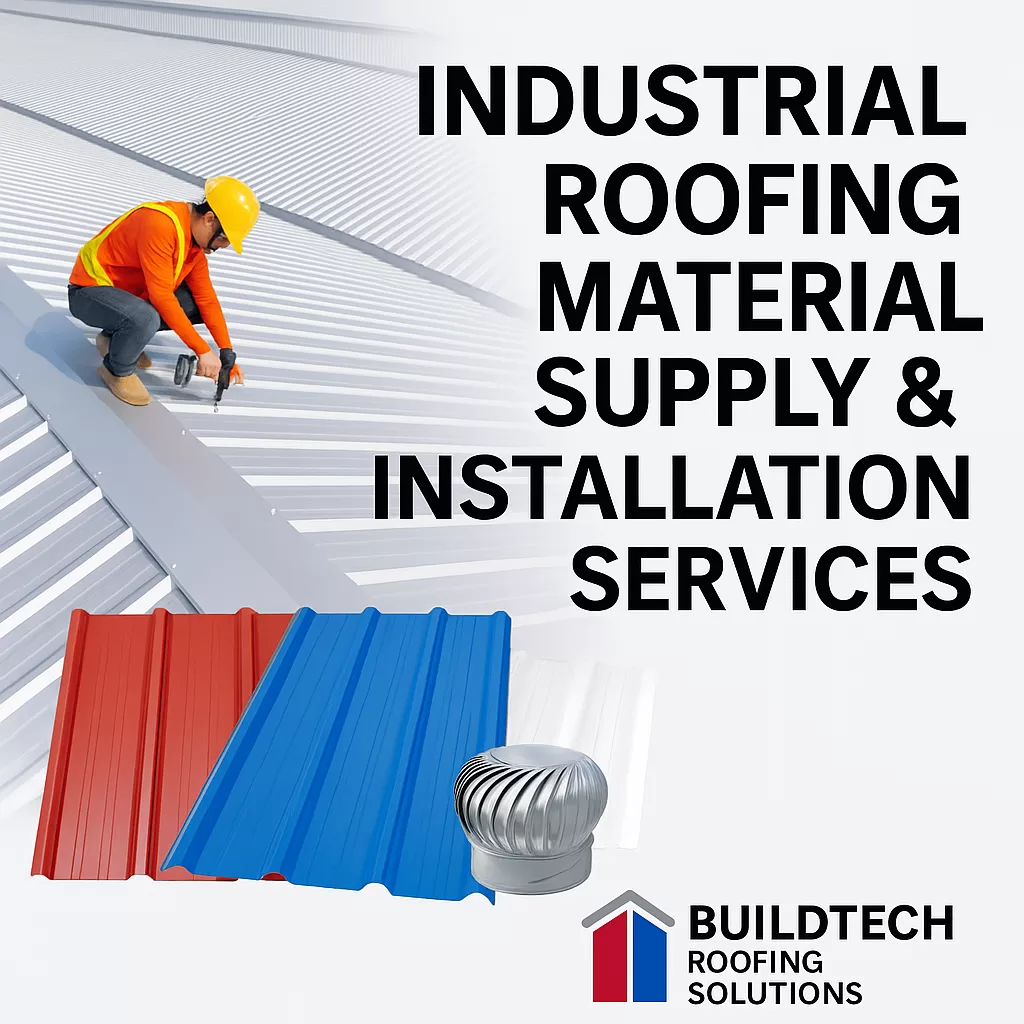Happy New Year 2026 | Buildtech Roofing Solutions
Happy New Year 2026 – Building Stronger Futures with Buildtech Roofing Solutions As we step into 2026, Buildtech Roofing Solutions extends its warmest New Year wishes to our clients, partners, architects, contractors, and industry associates. Your continued trust has been the foundation of our journey and the driving force behind our growth. Over the years, Buildtech Roofing Solutions has remained committed to delivering reliable industrial roofing and ventilation systems designed to perform under demanding conditions. From ridge ventilators and metal louvers to colour-coated roofing sheets, PUF panels, and roofing accessories, every solution we provide reflects our focus on quality, durability, and engineering precision. A Year Built on Trust and Performance Industrial roofing is more than material supply—it is about long-term performance, safety, and efficiency. In 2025, we strengthened our capabilities, refined our manufacturing standards, and executed projects that demanded technical accuracy and timely delivery. These achievements were possible because of the confidence our clients placed in us. As a result, Buildtech Roofing Solutions continues to be recognised as a dependable partner for industrial, commercial, and infrastructure roofing requirements across Maharashtra and beyond. Looking Ahead to 2026 The year 2026 represents progress, innovation, and stronger collaborations. As construction standards evolve, so do our solutions. We remain focused on: Therefore, our goal for 2026 is simple: to create roofing systems that add lasting value to every structure we serve. Our Commitment Going Forward Buildtech Roofing Solutions enters the New Year with renewed dedication to: We believe strong roofs support strong businesses—and strong relationships build stronger futures. New Year Wishes We wish you a year filled with growth, success, safety, and stability. May 2026 bring new opportunities and solid foundations to every project you undertake. Happy New Year 2026! — Buildtech Roofing SolutionsBond with Quality & Trust 🎉 Happy New Year 2026 – Buildtech Roofing Solutions As we welcome 2026, Buildtech Roofing Solutions extends heartfelt thanks to our valued clients, partners, and associates for their continued trust and support. Over the years, your confidence in our industrial roofing and ventilation solutions has strengthened our commitment to quality, safety, and performance. As a result, we continue to deliver roofing systems that stand strong in demanding industrial environments. Looking ahead, 2026 brings new opportunities, stronger partnerships, and smarter construction solutions. Therefore, we remain focused on innovation, reliable execution, and long-term value for every project we undertake. We wish you a year filled with growth, success, safety, and strong foundations in every structure you build. Happy New Year 2026! — Buildtech Roofing SolutionsBond with Quality & Trust
Happy New Year 2026 | Buildtech Roofing Solutions Read More »

